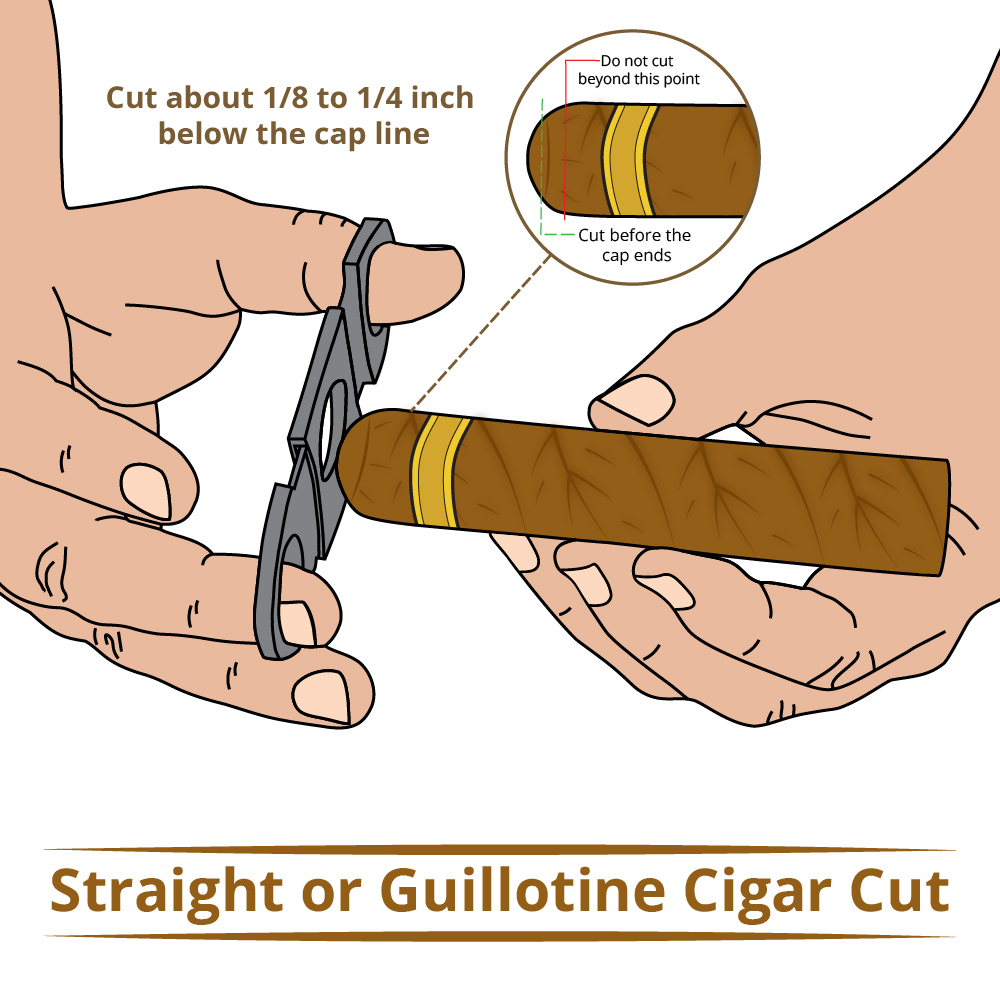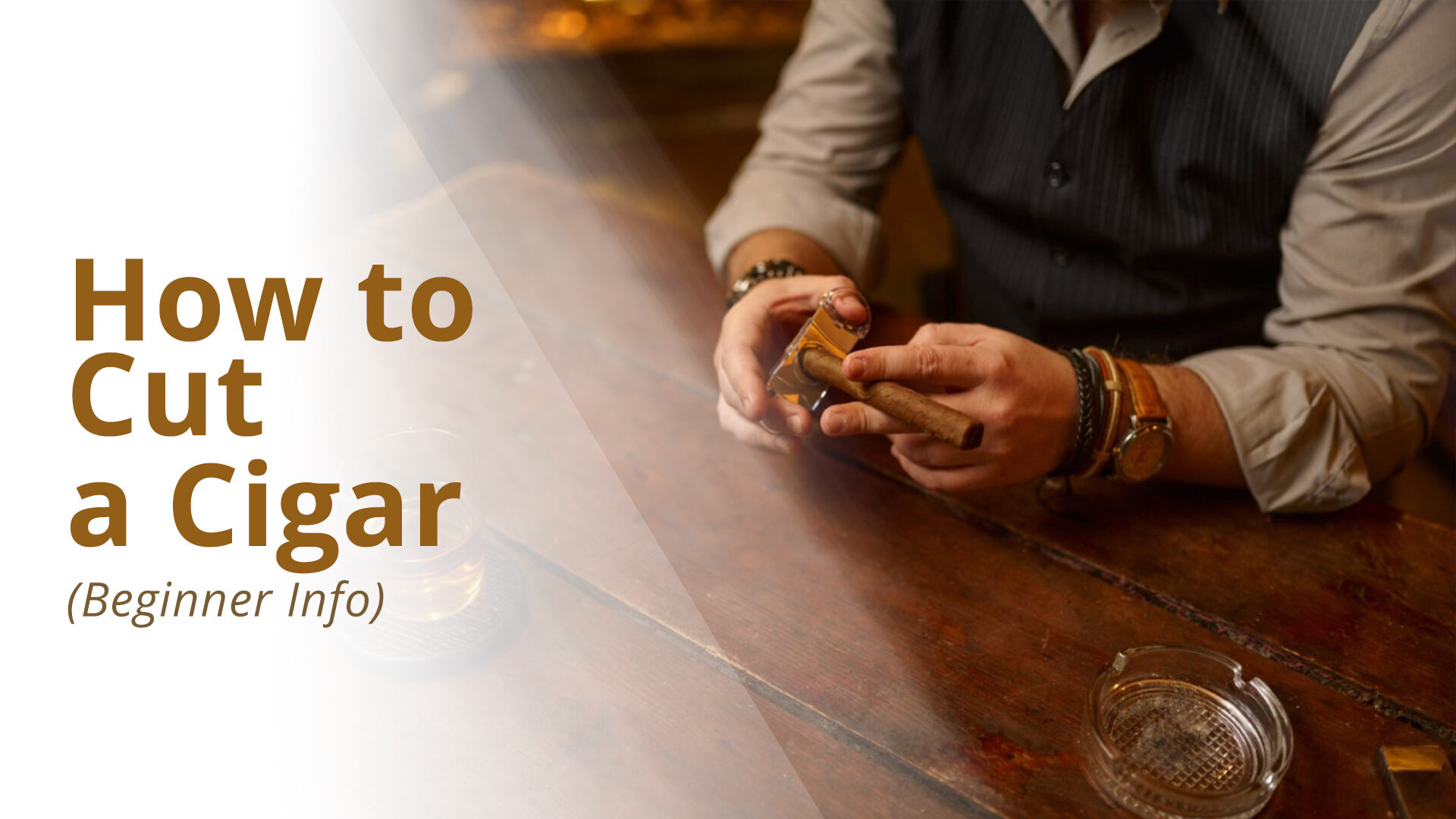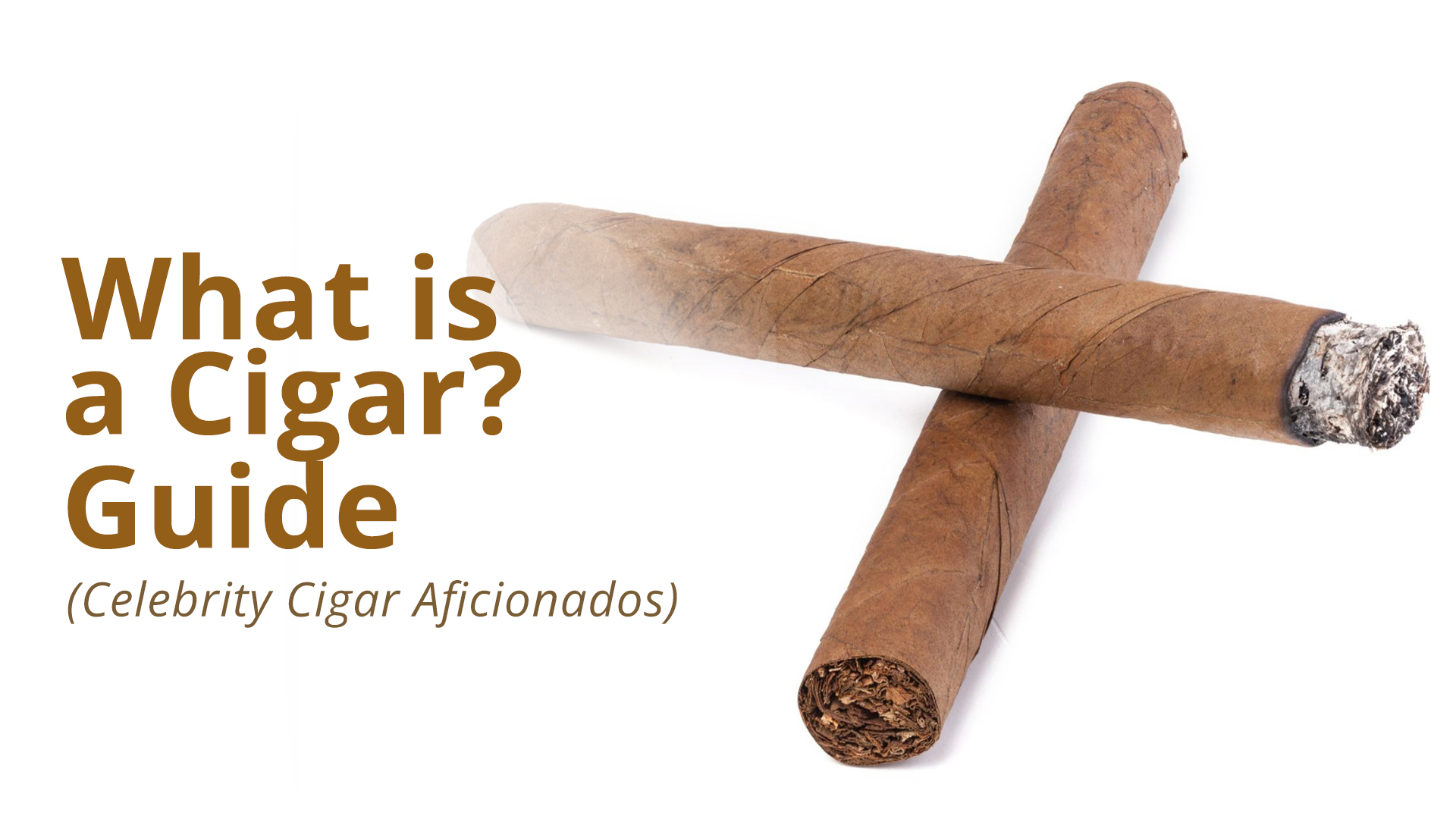Smoking a cigar starts with taking a couple of draws on it. Using a cutter on the cigar to remove the cap comes before that, though.
Cutting a cigar makes newbie cigar smokers nervous.
One wrong move, and they fear they’ll ruin it before they’ve gotten to savor it.
Yet, if careful and using one of the better approaches to cutting the head properly, it’s possible to get past early nerves.
If you’re taking your cigars in a coolerdor on the road, be sure not to forget your favorite cutter.
But should you do so, all is not lost. It’s possible to remove the cap by hand too.
Different Types of Cigar Cutters and Cigar Cuts
Right after you have chosen your stogie, now comes the good part. Cutting a cigar cap is one of the most precious rituals of the entire smoking experience.
Why? Because it’s where it always begins…
Sure, you may smell it before using a cigar cutter (or use your hands), but not long after, you’ll desperately want to smoke and taste the cigar too.
There are basic cigar cutters which are cheap and cheerful versions. Also, more elaborate ones with different cutting styles too.
You may have already heard of a few but need clarification about the differences. We got you.
Below we cover the various cigar cutters available and how they differ from each other. Later, we explain alternative ways to cut a cigar when there’s no cutter handy.
Also, for the nervous newbies, we’ll detail how to safely cut a cigar without messing up and answer a few of the more common questions around this topic.
Straight Cut “Guillotine”
The straight cut is the most popular option. You may have heard it referred to as a guillotine or as guillotine cutters because the internal mechanisms bare some similarities.

The cutter is small, held usually between a finger and thumb, and then depressed on either side to bring the blade down and through the head of the cigar.
Aim to take off the cigar’s cap and not below it to the outwardly curved shoulder.
Most of these cutting types use single blades. However, for greater accuracy, there are ones that are double-blade or dual-blade versions.
These aim to ensure a smoother, even cut to avoid unwanted snags, cigar wrappers getting caught and tearing, etc.
As basic cutters, you cannot go wrong with the straight-cut system. However, with that said, some cigar smokers prefer to use other cutting methods because they’re sometimes better for beginners.
Scissors
Scissor cutters are less commonly found because they’re a preferred method for slim cigars rather than generously sized ones.
These cutting scissors are different from regular household scissors, so don’t cut corners by trying a pair you find at home!
Instead, these are cigar scissor cutters designed to deliver exact cuts.
Quality matters here. Cheaper ones have inferior blades that won’t be sharp enough (or remain that way).
This leads to poor or uneven cuts, which could cause a cigar to become unwrapped or torn, thus ruining it.
Therefore, pay for good quality stainless steel ones if you enjoy slimmer cigars and wish to use a scissor cutter.
V-Cutter
The V-cutter is a good one for beginners to use.
While the straight cutter requires lining up the head of the cigar to where you wish to cut.
Sometimes prone for beginners to cut too deep into the shoulder – the v-cut method prevents this.
One side of this cutter type has a domed shape that nicely fits the curved cap and shoulder.
This allows the cap to protrude to be cut through without the shoulder being exposed to the blade.
A smaller V-shaped cut prevents any loose tobacco from reaching your mouth when later smoking the cigar. Cutting deeper risks this.
Also, when cutting too deep, the cigar burns too intensely and lasts a shorter time too.
Be aware that some inferior v-cutters won’t have the same design. As a result, it’ll be possible to push your cigar too far inside the mechanism.
Then cutting beyond the cap and into the shoulder can occur. So, check the design before purchasing.
Punch Cutter
The cigar punch cutter used on premium cigars is reassuring because it’s difficult for a beginner to mess it up. We say this with zero judgment.
The idea is that they punch cut through the cap and remove a small amount of tobacco or filler.
This one differs from a straight cutter that slices right across the head of the cigar.
The punch cutter is best used on standard cigar sizes rather than smaller ones.
The cutter itself is sometimes included at the bottom of an attractively designed lighter rather than as a separate cutting implement. Or it could be standalone.
For beginners, using the punch cut method prevents cutting so deep that the cigar’s wrapper can unravel.
It also doesn’t cut entirely across the cigar’s cap – it only makes a smaller hole. So you won’t do anything excessive and irreversible.
Because only a discreet hole is made, using a punch cut means you cannot go too deep.
As such, using a punch cut can be a relaxing activity if the straight cut or other methods make you nervous.
How to Cut a Cigar Without a Cutter
There are times when you wish to light up, but you cannot find your cigar cutter.
When off-grid and nowhere near a tobacco or cigar store, you could be in a bind.
Fortunately, it’s possible to use a pocket knife or other “alternative” cutting tools to work around the problem.
Some beginners will do this in a pinch.
However, we’d always recommend starting with proper cigar cutters before moving on to cutting a cigar without a cutter.
Sharp Knife
You can use a sharp knife to cut the tip of the cigar. It could be a Swiss Army Knife or something else, but the key is its sharpness.
If necessary, spend time sharpening it first.
A dull cutting tool risks tearing the cigar wrapper or otherwise damaging the cigar.
When using a knife to cut the cigar, position the blade on the edge and at the tip and gently rotate the cigar in your hand.
Do not cut the cigar in a mock guillotine method slicing through it.
The cut won’t be precise enough and will damage the cigar’s construction, ruining the smoking enjoyment later.
This hand-held method works best when you’re skilled with the use of a blade.
Fingernails
Determined cigar smokers often use just a thumbnail or fingernail to open a cigar.
They know only the cap needs to be removed – or part of it at least – and so their thumbnail can nicely do the trick.
Some even intentionally grow a longer thumbnail for this express purpose.
The wrapper leaf at the head isn’t thick and doesn’t require much effort to remove. So, do it gently if you’re using fingernails or a thumbnail.
Proceed step by step to remove only what’s needed.
This avoids creating loose tobacco at the head that’ll reach your mouth when smoking the stogie later.
Bite It
An old-school approach is to bite the cap to break into it.
The advantage here is it’ll work as a reliable method even for people who don’t grow their thumbnails long enough.
Because the cap is fitted at the end, removing it doesn’t take much effort. Just be careful not to overload the head with your saliva, as that is less than pleasant.
Even though it’s against proper etiquette to bite and chew on a cigar, it’s viable solution to take off the cap and smoke!
Poke It
Without a punch cutter but preferring this approach, it’s possible to poke the cap end with something handy and nearby.
All you’re trying to do is break into the cap and make a small hole in the filler.
Anything that’ll do the trick but crucially won’t leave an aftertaste is preferred.
So a toothpick, matchstick (the plain end), paperclip, or similar – all previously unused – will be fine for the job.
The magic here is creating a consistent opening that’s not lopsided.
Air must be able to pass through the cigar to the body, keeping it lit once it’s being smoked and enjoyed.
How to Cut a Cigar
Cutting the cigar is a skill that’s important to develop. It will become second nature, but as a beginner, go slow and with care.
Also, use a cutting method that is safest for beginner mistakes, and that feels comfortable to use.
Remember, switching to an entirely new cutting method will be like starting from zero again.
Like other pleasurable activities in life, rushing through them won’t lead to pleasing results.
Complications can arise when cutting a cigar improperly.
Mess up, and the wrapper could come apart. Or filler tobacco can reach your mouth when smoking the stogie because it was cut too deep.
Things like a poor cut and inhaling a cigar can set you back in your journey for sure. Don’t let that happen!
Pinpoint the Head for the Cut
Some new cigar smokers get the correct end wrong. We’re not sure how this happens, but sadly it does.
So, the cap is at one end of the cigar with a curved end. The foot, the other end that’ll be lit at a later stage, is exposed and has a flat end shape.
The position where the cap should be cut is the mastery part.
Go just past the cap, which is glued to the cigar, along the curved end.
This part is known as the shoulder. It gradually widens out until it achieves the same width as the body of the cigar.
Cut just past the cap and before the meat of the shoulder.
The shoulder contains tobacco leaf and filler, so you want to avoid cutting too deep.
Otherwise, loose tobacco could be released when smoking.
Less is more with cigar cutting. Don’t cut beyond the cap because you cannot undo it later.
Moisten the Cigar Head Slightly (Optional)
Putting the cigar between your lips allows moisture to reach the cap.
Not only does this give you the first taste of a premium cigar (or a reminder of something long missed), but it serves other purposes too.
The rolled tobacco leaves are less likely to crack when moist. Also, the glue within the cap performs better this way too.
While it is an optional step, moistening your cigar before cutting helps to get a cleaner cut.
Precise and Clear Cut
Indecision is not your friend with cigar cutting.
Whether it’s a small punch cut, a V-cut, or the traditional guillotine straight cut, it needs to be precise and follow all the way through.
Otherwise, hesitation can lead to cutting partway and then tearing the head of the cigar.
Once torn, getting the torn parts off neatly without damaging the remainder of the head is a big ask. Also, it gets messy too.
Choose the best cutting approach that allows you to proceed confidently.
This avoids a failure-to-launch scenario which in cigar-cutting terms can ruin a pricey cigar.
Things to Consider when Cutting a Cigar
Beginner cigar smokers don’t know all the answers. Here are a few things to think about when cutting a cigar.
Keep Your Cutters Sharp and Clean
Cutters do not remain sharp forever. So the less expensive it is, the least likely it is to stay sharp for long.
Dull blades wreck cigars before they’ve been enjoyed. Sharpen the cutters that you use. Learn to do so.
If you aren’t confident with it, check the efficiency of your cutters and replace them as needed.
Also, If you prefer to moisten the cap of your cigar, you’ll need to clean your cutter more frequently due to faster residue buildup.
Cut Quickly
Cut precisely and with reasonable force. Apply the appropriate amount of pressure based on the cut type and the cutters being used.
Also, have a steady hand or use a flat surface as added support.
How to Cut a Cigar FAQs
Do I have to cut both ends of a cigar?
No. Absolutely not! The cap is cut because when reaching your mouth, it must let air through the cigar to help it to remain lit.
The foot – the other end – is already open-ended.
Can you cut a cigar with regular scissors?
No. They are too dull and not designed for this purpose. An improperly cut cigar can damage it beyond repair.
There are cigar scissors for cutting and other stogie cutters like v-cut or straight cut. These all work fine.
How long does a cigar last once it’s been cut?
It depends on the size of the cigar. Many will last for several hours.
They will last longer when not cut too deeply, which would make them burn too hot and fast.
You should savor cigars over some time and never rush because you can get a cigar buzz and an unpleasant bad aftertaste from doing so.
Plan your day accordingly.




